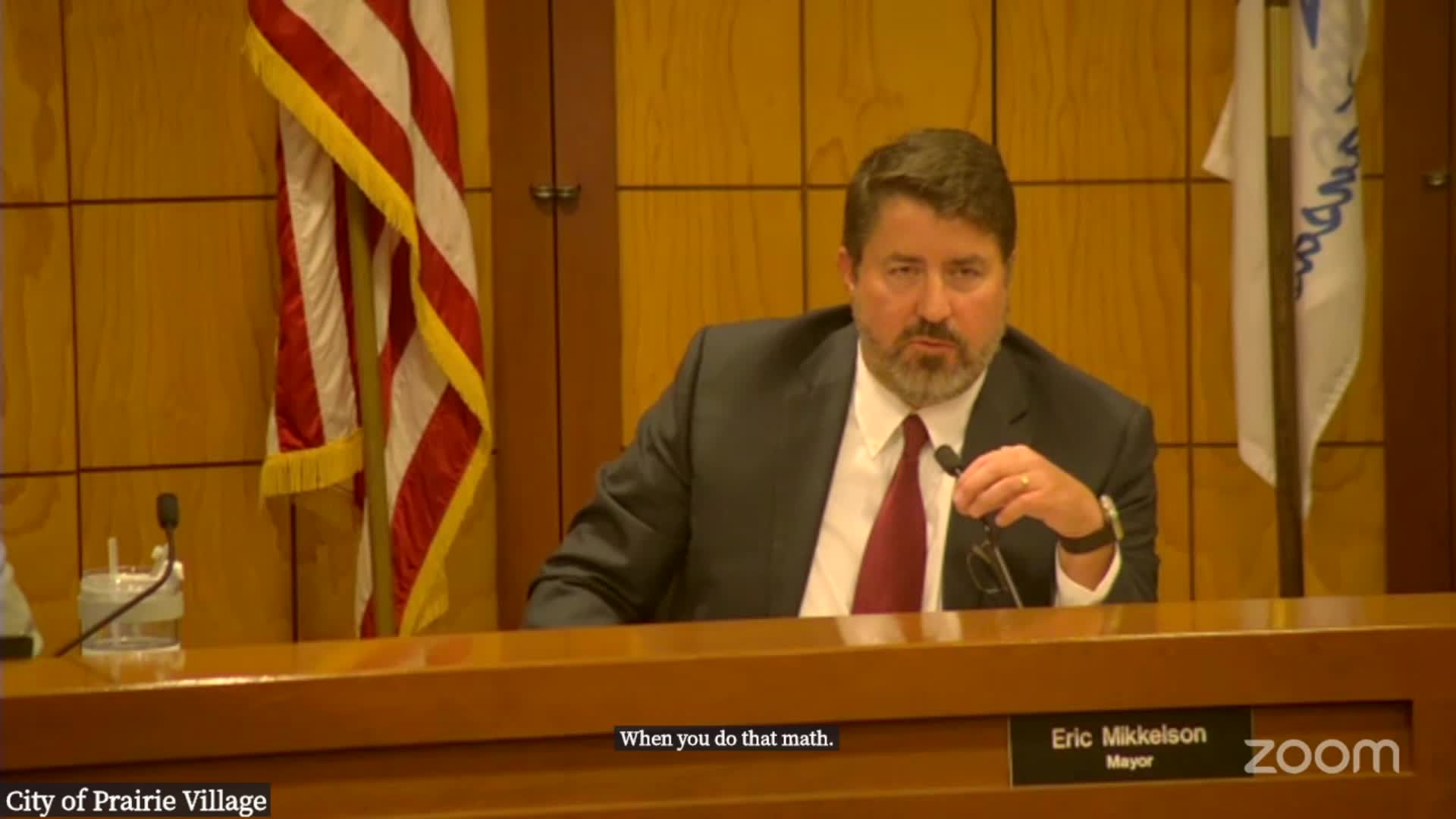Power Outages Spark Debate Over Buried Lines and Reliability
May 07, 2024 | Prairie Village, Johnson County, Kansas

This article was created by AI summarizing key points discussed. AI makes mistakes, so for full details and context, please refer to the video of the full meeting. Please report any errors so we can fix them. Report an error »

During a recent government meeting, officials discussed the ongoing challenges related to power outages and vegetation management in the community. A key point of contention was the effectiveness of burying power lines versus maintaining overhead lines. While burying lines can mitigate issues related to weather and vegetation, it was noted that repairs to buried lines can take significantly longer, leading to extended outages when problems arise. This has led past councils to conclude that the cost-benefit analysis does not favor underground lines under current circumstances.
Residents expressed frustration over frequent power outages, particularly in areas with dense tree growth. One resident highlighted that despite having buried lines, their power was still out for extended periods, suggesting that the solution may not be as straightforward as it seems. Officials acknowledged that outages can stem from various factors, including issues with distribution lines and substations, and emphasized that every circuit has different reliability levels.
Concerns were raised about the quality of tree trimming performed during emergency repairs. Residents reported that post-trimming, outages became more frequent, prompting questions about the follow-up processes for vegetation management. Doug Layman, the manager of distribution vegetation management, explained that while they do monitor and prioritize circuits based on outage history, the immediate goal during storms is to restore power quickly, which can lead to some issues being overlooked.
The discussion also touched on the need for better communication between utility crews and residents regarding vegetation issues. Residents expressed a desire for a more robust reporting mechanism to ensure that identified problems are addressed in a timely manner. Officials acknowledged the need for improvement in this area and committed to enhancing communication with residents.
Additionally, the meeting addressed the introduction of loop feeds in the power system design, which could potentially reduce the impact of outages by allowing for alternative power routes. However, this initiative is still in the design phase and requires regulatory approval.
Overall, the meeting underscored the complexities of managing power reliability and vegetation in the face of severe weather and aging infrastructure, with officials promising to work on better communication and management strategies to address residents' concerns.
Residents expressed frustration over frequent power outages, particularly in areas with dense tree growth. One resident highlighted that despite having buried lines, their power was still out for extended periods, suggesting that the solution may not be as straightforward as it seems. Officials acknowledged that outages can stem from various factors, including issues with distribution lines and substations, and emphasized that every circuit has different reliability levels.
Concerns were raised about the quality of tree trimming performed during emergency repairs. Residents reported that post-trimming, outages became more frequent, prompting questions about the follow-up processes for vegetation management. Doug Layman, the manager of distribution vegetation management, explained that while they do monitor and prioritize circuits based on outage history, the immediate goal during storms is to restore power quickly, which can lead to some issues being overlooked.
The discussion also touched on the need for better communication between utility crews and residents regarding vegetation issues. Residents expressed a desire for a more robust reporting mechanism to ensure that identified problems are addressed in a timely manner. Officials acknowledged the need for improvement in this area and committed to enhancing communication with residents.
Additionally, the meeting addressed the introduction of loop feeds in the power system design, which could potentially reduce the impact of outages by allowing for alternative power routes. However, this initiative is still in the design phase and requires regulatory approval.
Overall, the meeting underscored the complexities of managing power reliability and vegetation in the face of severe weather and aging infrastructure, with officials promising to work on better communication and management strategies to address residents' concerns.
View full meeting
This article is based on a recent meeting—watch the full video and explore the complete transcript for deeper insights into the discussion.
View full meeting
